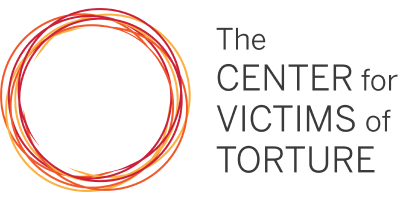8) Torture Survivors Can, and Do, Heal and Prosper
Over the years, CVT has been witness to the extraordinary healing achieved by clients as they rebuild their lives and become assets for our communities—culturally, professionally, socially and economically.
the journey for many asylum seekers and refugees is long and painful, from the moment they realize they can no longer remain in their homes, to the moment they arrive in a country willing (or at least potentially willing) to host them. Many clients tell CVT of their exhaustion upon finally coming for rehabilitative care. For some clients, like Kidane*, even going outdoors at all is difficult: “I was living a life of closed doors. I was isolated, always by myself.”
With the right support, healing is possible. Indeed, survivors of torture can heal from the physical and psychological wounds of torture with access to appropriate care and resources, which then allows them to rebuild their lives and further the significant contributions that several studies have shown refugees, asylum seekers and asylees make to economies and communities.
For example: When Esme first arrived at CVT, she was completely unable to speak to her counselor. When she was finally able to open up, she said that being separated from her children felt more unbearable than the multiple rapes she had survived. But Esme persevered. She continued with counseling and stayed strong as she waited years for asylum. Ultimately, she won asylum and was reunited with her children. Today she is happy, and the family is contributing to the community and building a new life in the U.S.
CVT’s clients have become assets for the community—culturally, professionally, socially and economically. As they realize the positive impact CVT has had on their lives, they talk about their own efforts to help others who have been tortured, bringing in new clients and helping spread the word about life-changing rehabilitative care. The healing that survivors of torture experience negates the vicious intention of the torturers. As David said, “The torturers’ words do not limit me anymore.”
